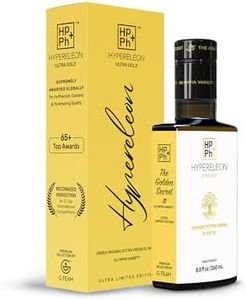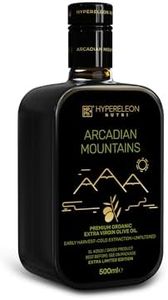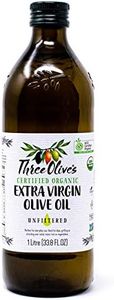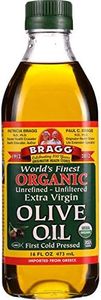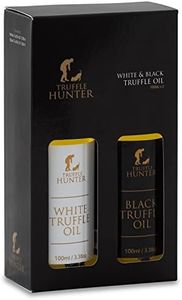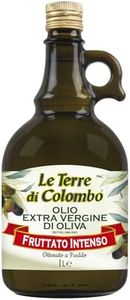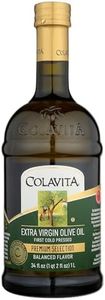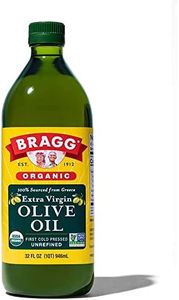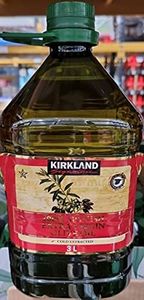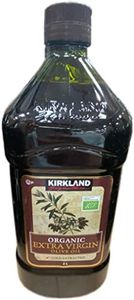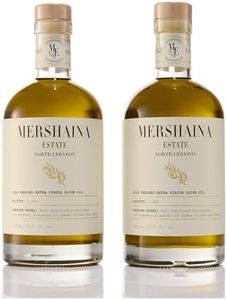We Use CookiesWe use cookies to enhance the security, performance,
functionality and for analytical and promotional activities. By continuing to browse this site you
are agreeing to our privacy policy
10 Best Olive Oils
From leading brands and best sellers available on the web.Buying Guide for the Best Olive Oils
Choosing the right olive oil can change the flavor and quality of your meals, so it pays to pick carefully for your needs. Olive oil comes in various types, each with distinct uses, tastes, and health benefits. Understanding the key features can help you select an oil that not only fits your culinary aspirations but also supports your lifestyle and cooking habits.Type (Extra Virgin, Virgin, Pure, Light)The type of olive oil indicates how it was made and its quality. Extra virgin olive oil is the highest grade, made simply by crushing olives and extracting the juice without heat or chemicals, preserving the best flavor and antioxidants. Virgin olive oil is similar but has a slightly higher acidity, which affects taste and quality slightly. Pure and light olive oils are more processed and lighter in flavor, making them suitable for cooking at higher temperatures but with fewer health benefits. If you want rich flavor and health perks for drizzling or salads, extra virgin is best. If you’re mostly frying or baking, lighter varieties could be more practical.
AcidityAcidity measures the amount of free fatty acids in the oil, which affects taste and quality. Extra virgin olive oil has low acidity (less than 0.8%), making it smoother and fresher-tasting, while higher acidity means the oil may have some off-flavors or less nutritional value. If you’re aiming for the most healthful, flavorful oil, look for the lowest acidity (usually labeled on bottles of top-quality oils). For everyday cooking where flavor isn't the priority, this matters a bit less.
Harvest/Press DateThis is the date when the olives were harvested and turned into oil. Olive oil is freshest and tastes best within a year of this date. Over time, the oil loses flavor and nutrients. Look for the most recent harvest or press date, especially if you’ll be using the oil raw. If you want to maximize freshness and aroma, always check this date before buying.
OriginOrigin tells you where the olives were grown and processed. Some regions are known for specific flavors or quality standards, but this often comes down to personal taste and availability. If you prefer a certain flavor profile or want to support a specific country or region, look for oils labeled with a single origin. Otherwise, blends from multiple countries are usually fine for everyday use.
Flavor ProfileOlive oils can taste mild and buttery or robust and peppery. The flavor comes from the type of olive, how ripe it was, and how it’s processed. If you use olive oil mostly for dipping or drizzling, you might want to experiment with bold, fruity, or grassy oils. For cooking, a milder oil may keep from overpowering dishes. Choose a flavor that matches your tastes and how you plan to use the oil.
PackagingGood olive oil is sensitive to light and air. Dark glass bottles or metal tins help protect oil from losing flavor and nutrients. If you’ll use olive oil slowly, opt for bottles that shield the oil from light. Consider size as well; smaller bottles keep the oil fresher as you'll finish them faster before it goes stale.

